|
|
Greetings!
We know that living in our region means we are at risk for hurricanes, and recent months have been no exception. While many are still recovering from Hurricanes Fiona and Ian, I am relieved to say that all of our staff and facilities are doing okay. Our partners at NOAA’s National Ocean Service often have aerial imagery of impacts following severe storms or natural disasters–take a look at the imagery from Hurricane Ian.
It has been a busy few months at the science center. Our bottom longline survey has been going on for several weeks–you can follow along on our blog. We have also been doing outreach about our Cooperative Tagging Program–if you’re out on the water, trying to reel in a billfish or tuna, we need your help with this community science effort.
I am in good company in our recent Faces of the Southeast Science Center web series. We continue to highlight members of the science center team and are joining the celebration of National Hispanic Heritage month. Keep reading!
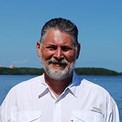 |
|
Thanks for your continued support and interest,
Clay Porch, Ph.D
Southeast Fisheries Science Center Director
clay.porch@noaa.gov
|
|
|
Oyster Reef Habitat Restoration to Protect Georgia’s Coast
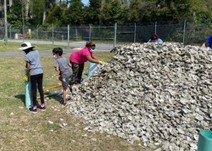
With a depleting shoreline and rising sea levels, scientists in coastal Georgia have been looking to further protect their shorelines with oyster reef habitat restoration. Restoring oyster reef habitat has been a point of focus for the health of Georgia’s salt marshes and ongoing coastal protection. Science center staff are working with partners at the Georgia Department of Natural Resources on two oyster reef restoration projects.
|
Dodging the Dead Zone: Finding Shrimp During Low-Oxygen Conditions
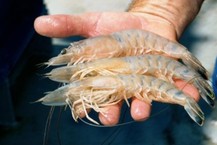
While brown shrimp and white shrimp are the most abundant species in the northwestern Gulf, seasonal hypoxic conditions in the Gulf of Mexico force many shrimp to relocate. Scientists from NOAA and North Carolina State University are trying to make these shrimp easier to find.
|
Izzy the Dolphin Unlikely to Survive in the Wild, Will Remain in Permanent Care
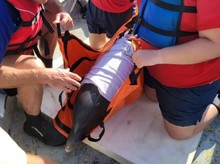
NOAA partners in Texas rescued a habituated dolphin, now known as Izzy, off North Padre Island. After years of increased interactions with people and boats, her health was declining. We determined that it is not in Izzy’s best interest to be released back into the wild. We can’t stress enough how important it is to let wild dolphins be wild. Please give them space and never feed or swim with them.
|
Considering Culture for Aquaculture: NOAA’s Efforts to Expand Aquaculture Social Science Capacity

NOAA is leading a planning effort to identify Aquaculture Opportunity Areas. Social scientists from the science center have been supporting this planning process by enhancing our understanding of coastal communities and how they perceive and might interact with aquaculture. These insights will ensure planning efforts align with the values and assets of a coastal community.
|
Reducing Bycatch Through Decades of Research and Innovation
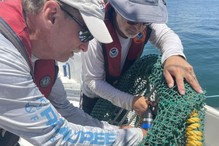
NOAA researchers are recognized internationally for their expertise in reducing sea turtle bycatch using real time turtle excluder device testing. Our staff uses their shrimping background, education, problem-solving skills, and creativity to understand how modifying fishing gear can reduce bycatch while keeping U.S. fishermen in business.
|
Louisiana Trustees Release Final Mid-Barataria Sediment Diversion Restoration Plan
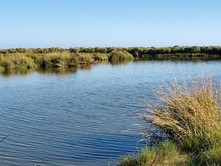
The agencies charged with restoring Louisiana’s natural resources after the Deepwater Horizon oil spill, have released the Mid-Barataria Sediment Diversion Final Restoration Plan. The plan evaluates using a large-scale sediment diversion to reconnect the Mississippi River to Louisiana's Barataria Basin estuary. It would restore wetlands and contribute to the broader restoration of the basin’s ecosystem.
|
|
|
Meet Jeff Gearhart, Gear and Vessel Support Branch Chief
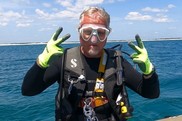 |
|
Jeff is the Chief of the Gear and Vessel Support Branch and supports surveys and research through the operations of our small research vessels. He also works to reduce bycatch of incidentally captured fish and protected species and provides expert consultations on fishing gear and fisheries techniques as they relate to fisheries bycatch for both domestic and international fisheries. Meet Jeff. |
Meet Ana Vaz, Assistant Scientist
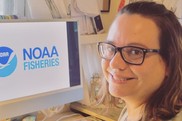 |
|
Ana's research aims to explore the patterns of red snapper larval dispersal and recruitment in the Gulf of Mexico. Specifically, they aim to explore how larval dispersal driven by the local oceanography, species behavior, and demographics can shape red snapper population structure and dynamics. Meet Ana. |
Meet Adyan Rios, Research Ecologist
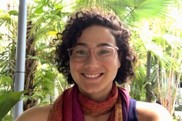 |
|
Adyan is a research ecologist and primarily works on stock assessment models to provide scientific advice for the management of fishery resources in the U.S. Caribbean. She analyzes large datasets to advance our population modeling workflows’ reproducibility and transparency. Meet Adyan. |
Meet Estrella Malca, Larval Ecologist
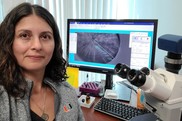 |
|
Estrella is a larval ecologist who specializes in larval age and growth dynamics. She has worked with snappers, lobsters, eel larvae, and lionfish. Recently, Estrella led larval oceanographic surveys and focused on highly migratory species such as western Atlantic bluefin tuna. Meet Estrella. |
Meet Clay Porch, Director
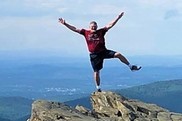 |
|
Clay is the Director of the Southeast Fisheries Science Center. He oversees the operations and research conducted by 350 people at six main facilities. Clay is responsible for planning, administering, and evaluating a dizzying array of multidisciplinary programs in support of our mission. Meet Clay. |
Meet Jamie Clark, Senior Research Associate II
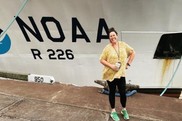 |
|
Jamie processes and ages a variety of marine fish species, such as red porgy, gray snapper, scamp, vermilion snapper, and white grunt, to age every year. Using mostly otoliths (inner ear bones of fish) and spines, she studies sections to determine the fish's age—by counting rings like a tree. Meet Jamie. |
|
|
Mark Your Calendar
Workshops to Discuss Dolphinfish (Mahi Mahi) Management Strategy
Over the next few months, we are holding a series of in-person workshops to gather input from stakeholders in the region that will guide dolphinfish (i.e. dolphin or mahi mahi) management. The workshops are being led in collaboration with the South Atlantic Fishery Management Council, and build on previous participatory workshops on the dolphin/wahoo fishery. Check our event page for future dates and locations.
|
|
|
The mission of NOAA's Southeast Fisheries Science Center is to provide the scientific advice and data needed to effectively manage the living marine resources of the Southeast region and Atlantic high seas.
Visit our website
|
|
|
|